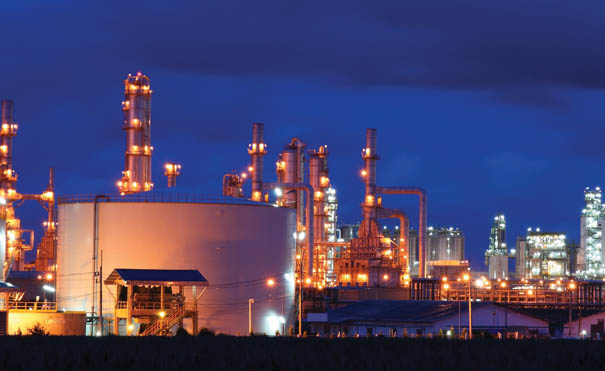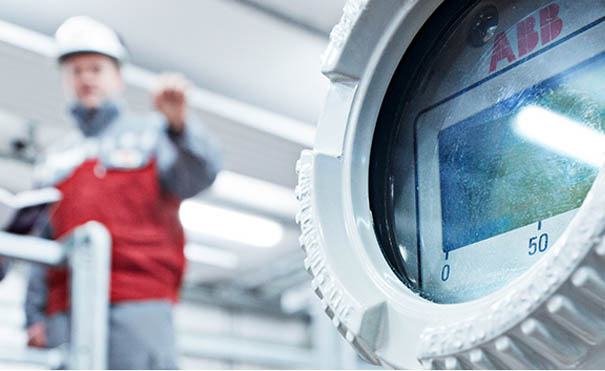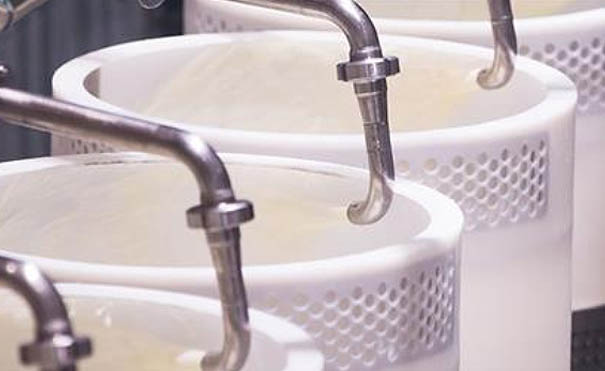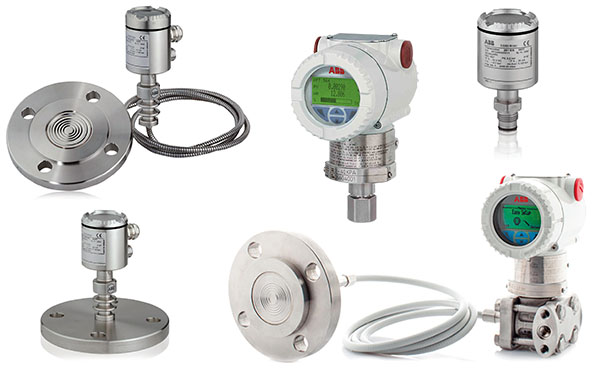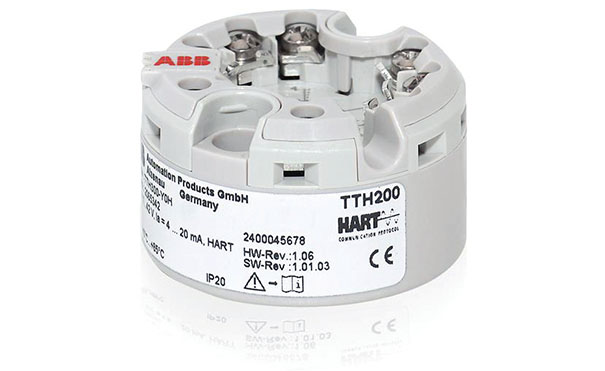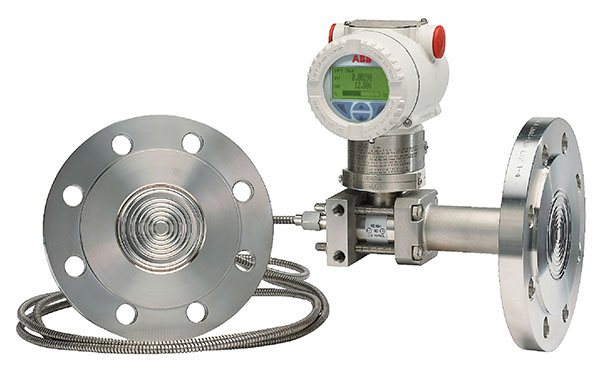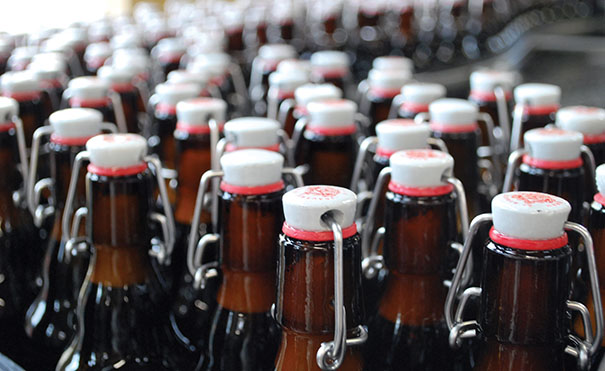Treating industrial wastewater is both costly and challenging. Effluent liquids or slurries from petrochemical plants typically comprise excessive levels of suspended particulates, volatile organic compounds (VOCs), and heterogeneous fluids.
These may be abrasive or corrosive in nature and can significantly impact the performance of processing or process monitoring equipment. Contact level sensors, for example, may become fouled by one or more constituents in the measured media, resulting in a significant rise in measurement inaccuracies.
API oil-water separators are one of the fundamental components used in wastewater treatment for petrochemical facilities such as oil refineries and natural gas processing plants. They operate on the principle of Stokes’ law, separating the constituent parts of complex emulsions based on their density and size. Suspended solids typically sediment and sink to the bottom of the separator while oils rise to the surface. The fluid content is then separated and discharged into separate storage tanks; the volumes of which are monitored using one of several level sensor technologies.
The limitations of conventional level sensor technologies
Conventional level sensors are limited for application in API oil-water separators due to their operating principles, which typically measure fluid levels as a function of either buoyancy or relative to the dielectric constant of the measured media. Buoyancy level sensors can be problematic as they make no contingencies for retentate media that has built-up on vessel walls. This can adversely skew level measurements and lead to measurement errors. The same could be argued of magnetic level sensors.
Innovative level sensors operating on the principles of laser time-of-flight analysis have revolutionized process control for API oil-water separators. Elimination of maintenance requirements, improved measurement accuracy, and reliable detection of liquids irrespective of their dielectric constant are just a few of the benefits offered by laser level sensors.
LLT100 laser level sensor for API separator storage vessels
The LLT100 is an advanced laser level sensor that can be installed into API separator storage tanks without prior silo mapping. It is equipped with a narrow laser beam (905nm) that can be aimed with high-precision, removing false echoes from the measuring process which typically arise from local variations on nearby structures. This is further supported by the small diameter interface of the level sensor’s collecting lens, which is integrated into a compact housing approved for use in explosive conditions.
This unique laser level sensor is available as three distinct options:
- An affordable yet powerful base level transmitter suitable for a wide range of applications;
- A high-pressure level sensor fitted with a choice of pressure rated flanges;
The high-pressure-rated model is ideal for use in API separators and resultant storage vessels. It provides accurate, real-time measurements of liquid volumes to an accuracy of within 11mm, using a combination of advanced laser pulses, efficient detection, and integrated calculations. These are unaffected by the dielectric constant of the measured fluid, or the presence of retentate media on the vessel walls.
Laser level sensors from ABB
ABB is a global leader in the development and supply of advanced level measurement technologies for demanding industrial processes. ABB laser level sensors are suitable for accurate measurements of demanding process media, with considerations for harsh measuring conditions.
Differential pressure sensors are critical components for process monitoring, providing reliable quantitation of the difference between the applied force at two separate points in a contained system.
This may include monitoring the difference in pressure between the fluid and the headspace in a container, or between two points in a flow system.
Monitoring differential pressure is critical for process control in an array of industrial sectors. They can be used in applications as varied as level measurement in fuel distilleries and flow monitoring in crude oil extraction pipes. This versatility represents broad measurement parameters that may include extreme peak temperatures and complex sample materials.
Such demanding measuring conditions can be severely challenging for even the most robust pressure sensors, which sample process conditions via narrow bore impulse lines. These small diameter components can become fouled or blocked by a build-up of particulates. In low-temperature applications, impulse lines can freeze. Either of these scenarios can have significant ramifications to the accuracy of measuring results and the maintenance requirements of the differential pressure sensor.
Unblocking impulse lines can be costly and time-consuming. To avoid emergency maintenance and eliminate measurement inaccuracies, facility operators typically implement periodic cleaning that causes mechanical downtime and lower throughput.
ABB’s revolutionary preventative maintenance
Preventative maintenance of differential pressure sensors is essential but inefficient. To counteract the dual issue of costly mechanical downtime, ABB engineered a technology known as Plugged Impulse Line Detection (PILD). While this does not eliminate the need for routine cleaning of impulse lines and regular pressure sensor diaphragm maintenance, it does provide a basis for more efficient predictive diagnostics.
PILD technology uses an algorithmic method to predict blockages in impulse lines based on frequency detection. This monitors noise generated by pressure fluctuations within the system and characterises these frequencies against a reference of normal operation. While the differential pressure sensor is in normal operation, the PILD diagnostic software continuously monitors the noise spectrum of the system to detect deviations from the norm. The sensitivity of this technology is such that it can detect variations in the noise spectrum before pressure measurements are even affected.
This diagnostic software is loaded into every ABB 266 differential pressure transmitter.
Benefits of PILD pressure sensors
Differential pressure sensors enabled with PILD diagnostics can protect the integrity of measurement results in demanding process conditions. They quickly detect anomalies in normal working conditions and process an alert for the specific impulse line that is affected. This enables plant operators to detect and eliminate problems from the measuring chain before they even arise.
PILD pressure sensors from ABB
ABB supplies an extensive range of PILD-enabled differential pressure sensors. The 266 series boasts a measurement accuracy of up to 0.025%, with a choice of direct or remote mounting and varied options of multi-sensor technologies.
The entire 266 series of differential pressure sensors from ABB is enabled with PILD diagnostics, but this software may be unsuitable for your distinct application requirements.
Milk is a commodity that is widely consumed worldwide, despite its high perishability and short shelf-life. Modern processing and pressure measurement instrumentation capabilities have dramatically improved the stability of milk-based goods which are susceptible to dangerous bacterial growth and colloidal degradation over very short periods.
This is primarily due to the complex biological composition of raw milk, which includes: enzymes; fat; lactose; various minerals; proteins; and vitamins, alongside numerous trace elements.
These constituent parts behave differently under varying thermodynamic conditions. Dispersive fat globules migrate readily through milk’s liquid phase – typically at higher rates under ambient pressure or elevated temperatures. Agglomeration of these fatty particles will cause milk to separate and spoil, so it is crucial that milk is subjected to consistent temperature and pressure measurement throughout processing.
This blog post will explore dairy processing in more detail, with a focus on the importance of pressure measurement.
Pressure measurement during pasteurisation
Raw milk may be subjected to pasteurisation directly following delivery, or after a cooling-down period where it is stored in agitated tanks at controlled temperatures of approximately 5°C (41°F). Pressure measurement for dairy storage tanks requires a sensor and transmitter with hygienic connections to eliminate the potential for hazardous cross-contamination. Once the raw material has reached suitable conditions, it is subjected to thermal processing.
Optimising this process requires the ubiquitous use of stainless steels for all instruments in the processing chain, as opposed to merely wetted parts and surfaces. It is also important to use process connections with valid certifications for use in the dairy industry, including 3-A; EEHDG; MID; or OIML-117. ABB supplies both 261 and 266 pressure transmitters with type DRD, DIN11864, or Varivent process connections that are certified for dairy production applications. These are widely utilised in pasteurisation processes.
Pasteurisation is a ubiquitous process in the dairy industry. It was initially developed as a method for sterilising beverages like wine but was subsequently deemed useful for extending the shelf life of processed milk. It is performed by heating milk to temperatures in the region of 74°C (165°F) for up to thirty seconds before it is re-cooled. This effectively destroys harmful microorganisms before the milk can irreversibly destabilise. Pressure measurement is required to maintain overpressure conditions, which ensures that treated and untreated milk does not come into contact. It is also important to perform pressure measurement of the heating cells to mitigate adverse pressure build-up that could contribute to mechanical failure and costly downtime.
Traditional milk processing still utilises a form of pressurised denaturation to achieve a homogenous product that is in-keeping with regulatory standards. Once the raw milk has been pasteurised and standardised, it is passed through a sieve under pressure to separate fatty particles and redistribute them throughout the liquid phase. This demands constant flow pressure measurement within tight degrees of tolerance to ensure that the end-product reaches an optimal consistency without undesirable heterogeneities. It is also important to use an internal vegetable oil such as Neobee, or white oil, in process instruments to ensure Federal Drug Administration (FDA) compliance to ensure the process will not be contaminated.
Pressure Measurement with ABB
ABB is one of the world’s largest suppliers of test and measurement instrumentation for industrial and commercial applications. W H Good Automation have supplied an extensive selection of ABB pressure measurement devices for dairy farm and milk processing applications. If you would like to learn more, read our brochure ‘ABB Measurement Solutions for Dairies‘.
When choosing a pressure sensor for process control and monitoring in a gas flow system or a distillery component, plant operators are faced with an array of choices.
Modern pressure sensors are equipped to provide accurate measurements under arduous operating conditions, providing outstanding resistances to a range of industry-specific corrosives. Absolute, differential, and temperature-compensated pressure measurements can be acquired for containers and pipelines containing: pharmaceutical solvents; flue gas; heated crude oil; and more.
This vast range of pressure sensors represents an industrial problem of choice. The suitability of many pressure components is likely to intersect with multiple applications and sectors, yet there are unique attributes to consider when choosing a pressure sensor for your own facility.
This article will outline four key things to consider when choosing a pressure sensor.
1. Pressure Sensor Type
The primary consideration for selecting a pressure sensor is the type of component that your application requires. For example, negative pressure values cannot be quantified by a gage transmitter, while temperature-compensated pressure measurements can only be carried out by a multivariable pressure sensor or an array of separate pressure and temperature monitors. Pressure transmitters can typically be broken down into four distinct types:
- Absolute pressure measurement sensors use full-vacuum conditions as a reference point, quantifying the pressure levels of a container as a value over 0 bar;
- Differential pressure sensors measure the difference in applied force at two points within a flow system or a process container;
- Gauge pressure measurement instruments use atmospheric pressure of 1.01325 bar (15 psia) as a reference point;
- Multivariable pressure sensors measure the differential and absolute pressure, then compensate that with temperature measurements.
2. Pressure Sensor Range
The pressure range is a superficially simplistic consideration for choosing a pressure sensor. Operators typically depend upon pre-determined application pressure ranges and select a transmitter that matches those values. However, density changes or abrupt pressure variations can reduce the efficacy of measurement equipment, and in extreme cases can damage the component. In such instances, it is advisable to select a sensor with a higher pressure range and calibrate it accordingly.
3. Atmospheric / Process Conditions of Application
Prior to component selection, it is paramount that you consider the corrosive influences that your pressure sensor could be subjected to during operation. Seals may need to be wetted to withstand solvent corrosion in laboratory applications, while special considerations should be taken to protect a pressure sensor’s internal electronics. Corrosive process media or incident humidity can damage transmitters, reducing measurement accuracy and increasing the risk of premature component failure.
4. Onboarding Times
Installation of new components usually impacts a facility’s throughput due to mechanical downtime during integration and reduced efficacy from onboarding processes. For example, the pressure-sensitive diaphragms of a transmitter must be welded to measurement sites to acquire force values and convert them into electrical signals. Ease of weldability and low wiring footprints are critical for rapid and efficient component integration in applications where extended periods of component inactivity are not an option.
Pressure Sensors from ABB
ABB provides a robust range of sensors for customers all over the world. Our range has provided unique measurement solutions for facilities in the oil and gas, energy, laboratory sectors, and more.
A temperature transmitter is one of the electronic components in an industrial or laboratory thermal measurement array.
They act as the interfaces between a control system and a temperature sensor, converting analog thermal readings into scaled digital output signals with reduced background noise to enable accurate temperature monitoring with low degrees of interference. This complex system enables analysts to understand the thermal conditions of a process chamber or flow system as a value of degrees Celsius or degrees Fahrenheit in real-time.
Temperature transmitters can be manufactured as stand-alone devices that are attached to one or more temperature monitors in a process control system or integrated into a component’s connection head. The latter arrangement reduces the wiring requirements and the instrument footprint with an improved mechanical connection that is less susceptible to corrosion from process gases, vapors, or temperatures. Although the functionalities of a temperature transmitter are typically dictated by the application requirements.
Each of these component styles may be required to make signals available as an immediate digital reading and to transfer the data further down a measuring chain for additional processing. This article will explore the types, capacities, and applications of temperature transmitters in more detail:
Field-Mount & Head-Mount Temperature Transmitters
A field-mount temperature transmitter is an external component with an optional indicator and an encapsulating housing of die-cast aluminum or stainless steel. This protects the sensitive electronic components of the system from humidity, moisture, and other corrosive media.
Head-mounted temperature transmitters are integrated into the connection head of a temperature sensor with a direct connection to a thermowell via the extension tube and the process connection.
These are both connected with conventional Two-Wire technology, which uses the same wire connections for the power supply and signal outputs. With this technology, the temperature values are acquired by a measuring inset and converted into a thermal voltage, which is scaled into a load independent 4-20mA direct current (DC) signal. This signal can be immediately displayed on the digital indicator integrated into the transmitter’s housing, and transferred for further process control and analysis.
Temperature Transmitters from ABB
ABB has over 125 years’ experience in the field of temperature measurement for some of the most demanding industrial environments. Their range of temperature transmitters has been adapted for distinct application requirements, with field-mount and head-mount temperature transmitters suitable for difficult, often hazardous environments. This range includes:
- TTH200 head-mount temperature transmitter with a universal sensor input for RTD probes and thermocouples, and an accuracy of 0.1%. This integrated devices is tested to multiple compliances for explosion protection, corrosion monitoring, and extended diagnostics.
- TTF200 field-mount temperature transmitter with an optional LCD display and several configurable arrangements. It features the same outstanding accuracy of the TTH200 and is also tested to numerous specifications for industrial safety requirements.
Pressure in a contained system can be quantified as a value against atmospheric or absolute pressure, or as the differential value between the applied forces of two distinct points.
This last value is critical for a plethora of process control applications, providing insights into the ongoing efficacy of pressure vessel containers and gas flow systems. Many industries rely on differential pressure transmitters for level sensing in condensers, or to acquire quantitative data about process performance and to monitor component throughput for changes over time due to build-up of particulates and contaminants.
Differential pressure transmitters acquire the differential pressure of a closed system by obtaining the applied force at two measurement points and calculating the difference against pre-defined application parameters. This article will explore how a differential pressure transmitter works in more detail:
The Components of a Differential Pressure Transmitter
Differential pressure transmitters are comprised of a robust electronic module and two sensory diaphragms that provide the electronic reading of applied forces in a containment vessel. These arrangements are physically connected in set configurations depending upon the application requirements.
Applied pressure readings are acquired by the diaphragms, which register pressure as surface deformation and translate that value into an electronic signal. This signal is transferred to the differential pressure module, which compares the two values and expresses the pressure difference as a value of pounds per square inch (psi), bar, or kilopascals (kPa). These diaphragms are all-welded to maintain the container integrity in vacuum conditions and for wet leg applications, such as level measurement in crude oil distilleries.
Applications of Differential Pressure Transmitters
Differential pressure transmitters can be used for reaction and process monitoring in a range of industrial sectors, with high resistance to corrosive media and atmospheric moisture. The diaphragms are typically fabricated from stainless-steel and are inherently resistant to oxidisation and gas adsorption in flue pipework for example. Inconel diaphragms can be applied for improved resistance to salt water in marine hydrocarbon exploration.
The electronic module can be calibrated to perform for dry and wet leg applications, providing accurate pressure readings for materials that evaporate or condensate. Select differential pressure transmitters also feature wireless communications to enable remote monitoring of pressure readings in potentially hazardous applications.
Further applications of differential pressure transmitters include low-temperature reaction tank monitoring in the chemical sector and filtration monitoring for a range of flow systems.
Pressure Sensors from ABB
ABB is a leading developer of differential pressure transmitters for a range of industrial and research applications – from the everyday to the cutting-edge. With All-Welded diaphragms, highly automated on-board configuration, and enhanced plug and play graphical interfaces, measuring differential pressure is a safe and seamless process. Our range of differential pressure transmitters includes:
- 266DRH, equipped for remote-sealing with a base accuracy of within 0.06% and a span limit of 4 – 16,000kPa;
- 266DSH, a comprehensive differential pressure transmitter with an expanded span limit of 0.05 – 16,000kPa with update rates as rapid as 32 seconds;
- 266MRT, a top-performance differential transmitter with multisensory technology for liquid, gas, and steam flow and level measuring, plus density measuring, with a base accuracy of within 0.04%;
- 266MST, for simultaneous measurement of both differential pressure and absolute pressure with range-topping performance levels and multiple output signals for exceptional versatility.
Liquid dosing is critical in the food and beverage industry
It requires highly-accurate flowmeters to accurately dose ingredients and solutions into containers or additional processing equipment for mixing and blending processes. This must be carried out with high degrees of precision and repeatability for batch-to-batch manufacturing of consumer products.
Both electromagnetic flowmeters and mass flowmeters are used at different stages of food and beverage dosing. This blog post will explore the use of both systems for dosing processes:
Electromagnetic flowmeters for batch dosing
The flow of electrically-conductive fluids is typically monitored using a hygienic flowmeter such as the HygienicMaster FEH500 which can be integrated into a processing system for direct batch dosing. An internal counter monitors the flow of liquid according to electromagnetic principles with a measuring value error of as low as 0.2% of the system’s flow rate. This enables the device to operate with automatic correction for overrun and improve the dosage accuracy for filling procedures at reduced volumes. This can significantly improve the cost-efficiency of dosing electrically-conductive liquids for mixing, blending, and filling processes.
Electromagnetic flowmeters assess the volume and flow of a liquid as a product of the material’s sample voltage. This is unsuitable for measuring materials with low electrical conductivity or other electrically-conflicting properties. Solutions with high alcohol contents, elevated sugar contents, or emulsions with suspended fatty particles must be dosed according to alternative principles.
Mass flowmeters for batch dosing
A mass flowmeter measures the flow of a liquid as a quantity of mass travelling through a detector over time. This value is acquired by introducing Coriolis acceleration to the liquid flow and assessing the inertial force generated by the liquid’s angular momentum. Mass flow is advantageous over electromagnetic flow as measurements do not depend on the conductivity of the liquid media. It can also be used to determine the volumetric flow, density, and concentration of fluids being pumped through a process system.
ABB’s CoriolisMaster series of mass flowmeters are ideal for dosing applications in the food and beverage sector. The FCB100 mass flowmeter with an AC500-eCo controller provides multivariable flow measurements of dosage fluids with simplified installation requirements and a reduced component footprint. This arrangement is capable of correcting for trace gas inclusions that can arise in complex suspensions and reduce the dosage efficiency and repeatability.
There are multiple ColiolisMaster combinations suitable for food and beverage dosing, including additional considerations for hygiene requirements.
Flowmeters from ABB
ABB provides high precision flow measurements for a broad range of industrial processing requirements. ABB electromagnetic and mass flowmeters are suitable for comprehensive food and beverage dosing applications, with considerations for complicated and expensive filling media.



